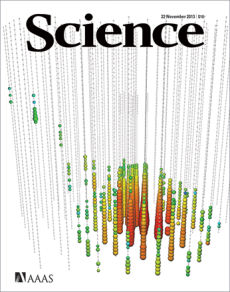IceCube at NERSC
Why it Matters
The IceCube team has ushered in an era of "neutrino astronomy," whereby particles – not radiation – are used to study astrophysics and cosmology. IceCube is a $272M National Science Foundation initiative to build and use a neutrino detector at the South Pole, to search for extraterrestrial sources of high energy neutrinos from exploding stars, gamma ray bursts, cataclysmic phenomena involving black holes and neutron stars, and from dark matter interactions.
Key Challenges
The same qualities that make neutrinos valuable observational tools also make them notoriously difficult to study, because neutrinos interact only through the weak nuclear force, so they aren’t deflected by magnetic fields and are therefore, nearly impossible to detect. The IceCube observatory consists of 5,160 detectors embedded in a cubic kilometer of ice 1.5 kilometers beneath the Antarctic surface. NERSC PDSF and Carver systems are required for Monte Carlo simulation and IceCube data analysis.
Accomplishments
IceCube results published in Science and Phys. Rev. Letters were deemed Physics World Breakthrough of the Year for 2013. The IceCube team detected two neutrinos with Peta-electron volt energies that originate from far beyond our solar system. These energies are almost 100 times the energy of the most energetic collision achievable in the Large Hadron Collider.
Investigators
Chang Hyon Ha and Lisa Gerhardt, Lawrence Berkeley National Laboratory
More Information
http://www.nersc.gov/news-publications/news/science-news/2013/searching-for-cosmic-accelerators-via-icecube/ and icecube.wisc.edu








